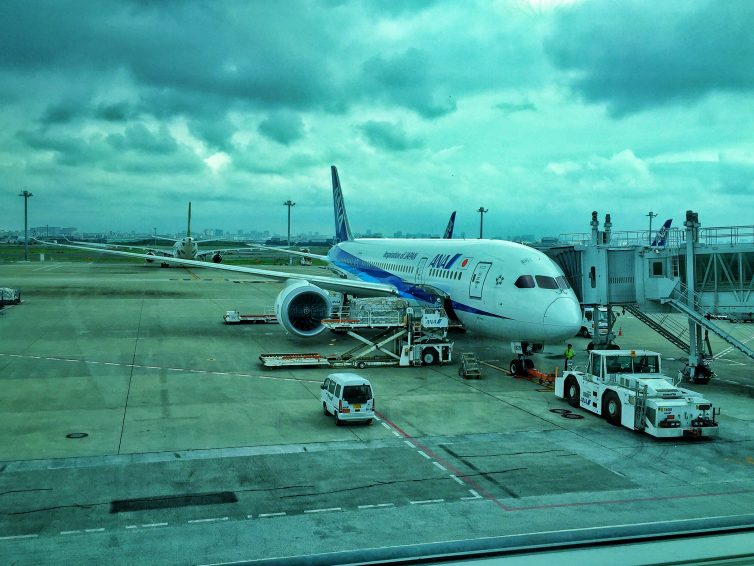
“Inspiration of Japan” — Photo: Manu Venkat | AirlineReporter
Air travel brings people together, but at the same time it can be a great way to experience the differences between countries or cultures. I got to do just that during a trip to Japan, which had long been at the top of my destination list. My time on the ground exploring Japan’s teeming cities was amazing, but I also enjoyed experiencing Japan’s aviation world and how in many ways it differed from what I was used to in the U.S.
Read on for my two cents (two Yen?) on flying around Japan with one of its two flagship airlines: All Nippon Airways (ANA).
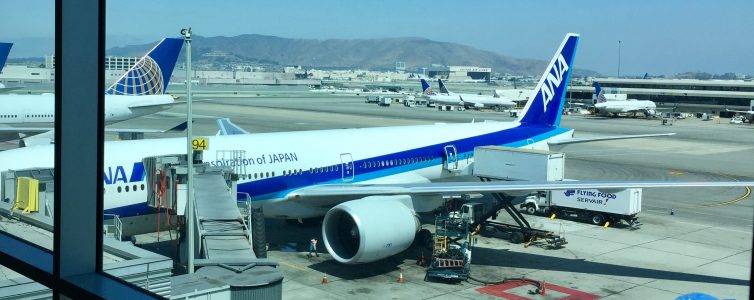
An ANA 77W preparing to head back to Japan from San Francisco — Photo: Manu Venkat | AirlineReporter
What’s With All the Wide-Bodies?
(Note: I’m referring to the planes, not the people)
The first thing that struck me after landing in Japan is how many BIG planes there were flying around, even on short domestic routes. Wherever you looked, there were 767s, 787s, and even 777s prepping for one-hour hops to other Japanese cities. Until not too long ago, Japanese domestic routes were also buzzing with high-capacity 747s. A look into the AirFleets.net database shows that yes, there are in fact way more widebodies (twin-aisle aircraft) in Japanese airline fleets compared to the proportion found in U.S. legacy carriers’ fleets:

But why? Well, for all the complaints there are in the U.S. about overcrowded airports, the issue is far worse in Japan due to its population density and lack of available real estate for airports. Japanese airlines simply have to fly bigger planes because each existing slot, runway, and airport must serve more people. When you look at the ratio of city populations to the number of runways that serve them (as a proxy for take-off and landing slots), I think the numbers speak for themselves:

Runway count = Tokyo: Haneda (4) and Narita (2). NYC: JFK (4), Newark (3), and LaGuardia (2). SF: SFO (4), Oakland (1), and SJC (2).
Japan is a Planespotter’s Paradise
Let’s be honest: bigger aircraft make for more interesting plane watching, right? Personally, I think it’s way more fun to see a Dreamliner on departure (that wing flex!) than a dime-a-dozen 737 or A320.
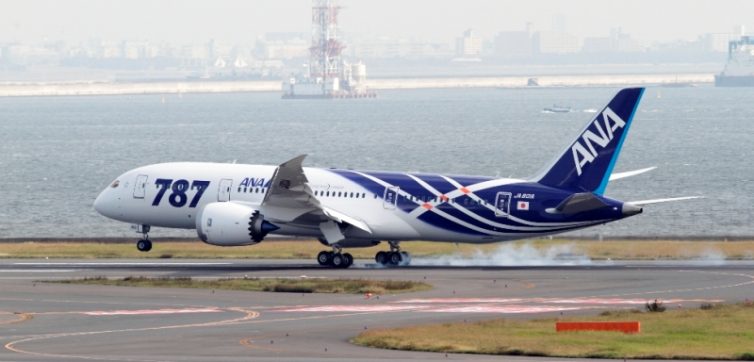
ANA’s first Boeing 787 lands at Haneda – Photo: The Boeing Company
BONUS: Plane Spotting at Tokyo International – Haneda
But it’s not just the local fleets that make Japan great for plane spotting. The airports have some amazing observation areas. And from a few minutes at one, you can tell that AvGeek culture is alive and well in Japan ’“ perhaps even more so than in the U.S. If you pass through Haneda or Narita, be sure to check out an observation deck or two.
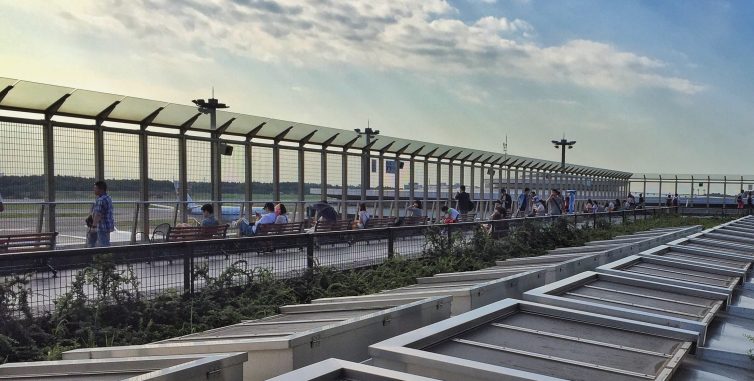
The huge, beautiful, and well-attended observation deck at Tokyo Narita Terminal 1 — Photo: Manu Venkat | AirlineReporter
ANA: Worthy of its Five-Star Status
Japan’s flagship carriers ANA and JAL have reputations for excellence in both operations and onboard service. ANA has the additional distinction of a Skytrax Five-Star rating, an exclusive club with only eight other inductees: Asiana, Cathay Pacific, Etihad Airways, EVA, Indonesia-based Garuda, China’s Hainan Airlines, Qatar Airways, and Singapore Airlines. My expectations were high before I got on ANA metal (or, eh, plastic as it may be), and in almost every way the experience delivered.
ANA gate staff run the most masterfully organized boarding process I have ever seen. Once onboard, I appreciated the crew’s considerate announcements, such as:
- “Turbulence does not affect the safety of this aircraft,” delivered after the seatbelt sign was turned on mid-flight. I think a lot of nervous flyers in the U.S. would appreciate hearing something like this.
- After landing: “You may turn on your mobile devices, but we ask out of consideration to other passengers that you do not speak on the phone until you have left the aircraft.”
Just like its home country, ANA combines consummate professionalism with a real sense of fun. The tarmac crew smiles and waves goodbye at departing aircraft. The safety video is adorably animated. And you’ve gotta love the Star Wars liveries.
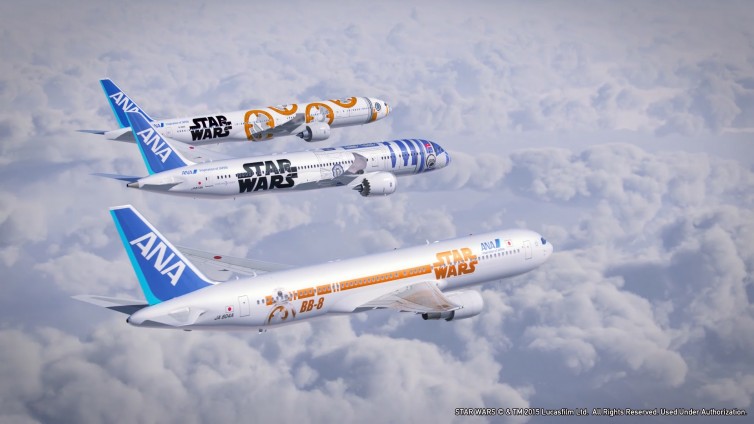
All three ANA Star Wars liveries – Image: ANA
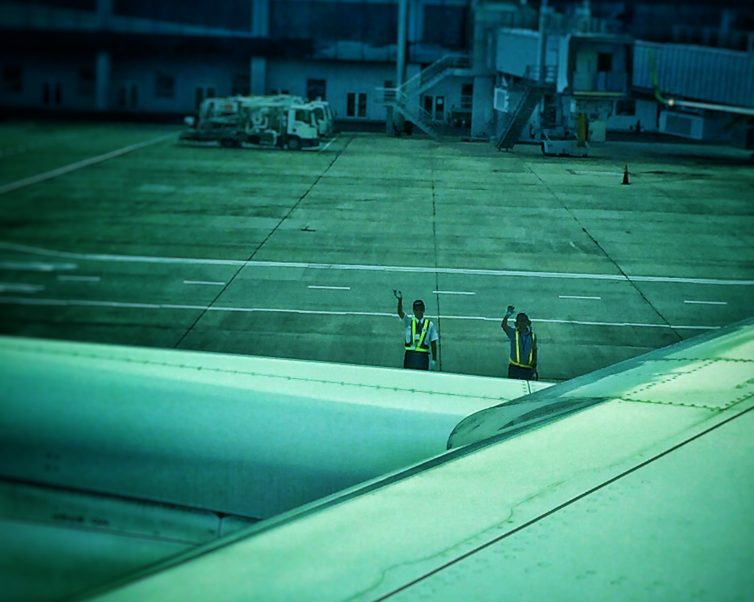
A friendly send-off from the ANA tarmac crew — Photo: Manu Venkat | AirlineReporter
Service was pleasant and efficient, though as with the rest of Japan it’s not a given that English will be spoken. The food on medium-haul international flights was delicious and portions were generous — more substantial than what I received on much longer transpacific flights on U.S.-based airlines. ANA’s special citrus juice, made with Japanese kabosu, is one of the most refreshing drinks I’ve ever had on a plane.
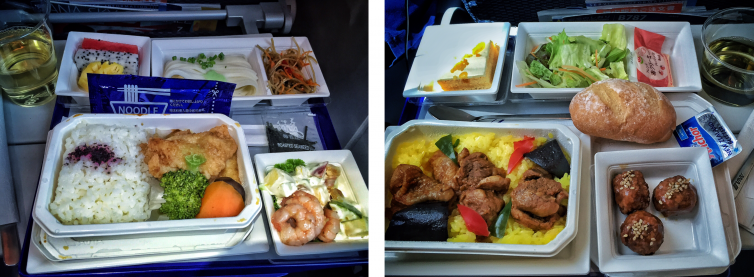
Two tasty ANA meals in Economy — Photo: Manu Venkat | AirlineReporter
ANA was a wonderful ride, and I’d be eager to try JAL to see if the experience is comparable. Of note, JAL is a member of the oneworld Alliance with American, while ANA is one of United’s Star Alliance partners.
I had a great time broadening my AvGeek horizons in Japan. Now it’s time for the AirlineReporter community to hear from you. Use the comments section below to share your experiences and perspectives on air travel in Japan.
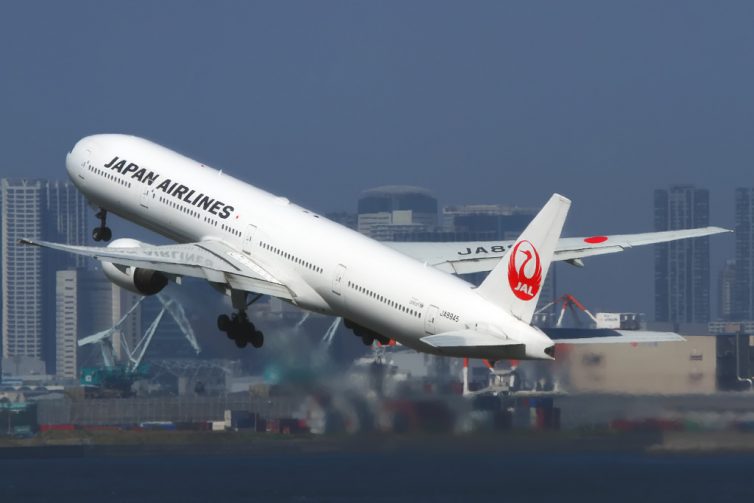
I couldn’t agree more on Japanese air carrier service, promptness, large modern aircraft, and the joy it is to fly in Japan (compared to the US experience). I’ve flew on 777s, 787s, and 767s that were 90 minute domestic flights. Crazy.
While I agree that experiencing a wide body aircraft is always a fun experience, I wouldn’t want to fly on them for short domestic hops. The time it takes to get all those people on and off is such a waste.
Boarding and deplaning in Japan is a breeze since the Japanese are very prompt, organised and considerate. Plus they don’t carry much luggage on board. I wish other countries would learn from them!
I agree Lindsay that there seemed to be a much more courteous spirit to the boarding process in Japan vs. what we’ve sadly become used to in the US.
And Live5 that’s a good point. Although in some cases I think boarding a twin-aisle plane can be quicker than with longer single-aisle planes like A321s, 737-900s, and 757-300s.
Manu, I’ve done numerous, extended Spotting Missions to Narita since the year 2000 – each 30 to 32 days in duration! It is indeed a spotters’ utopia! I’ve found and shot from (at least) 17 SUPERLATIVE photography points; including the observation decks, my hotel and around the perimeter of both runways. Aside from my hotel, EVERY photo point I go to I see numerous other photogs there! NAA ( Narita Airport Authority) has provided large (and smaller) parks DEDICATED to plane spotting! Furthermore, the aeronautical museum at the southeast end of Runway A ( 16R/34L) is another OBLIGATORY location for geeks to visit! ESPECIALLY the Observation Room on the Top Floor. Admission is 500 JPY (less than Five US Dollars ) for adults. You can acquire a 20% Discount Coupon at the museum’s shop (store) on 5F ( Floor 5 ) of Terminal 1. Below the Observation Room, there are NUMEROUS displays to attract your attention. Including numerous photos of aircraft and airlines seen at Narita. ( I’ve shot numerous digi-images of them). I GUARANTEE that this museum won’t disappoint the avid avgeek!!
I’ve spotted at major airports in Europe; where plane spotting is popular. I’ve found that Narita offers FAR MORE than any of them! Therefore, this why I return to Narita, year after year! Furthermore, airport Security is the BEST I’ve experienced ANYWHERE. However, Security personnel NEVER harass me (or any spotter)! They understand what we’re doing – and why! That’s another main reason why I go to Narita – whereas, in the US, I often have to deal with CLUELESS cops when I’m spotting!
Haneda is a perfect complement to Narita. It’s Observation Decks, atop all three terminals, are incomparable! There, too, no hassles from airport police!
The train journey from Narita to Haneda varies in length; depending on which train line you use. It usually takes me around 1h40m. But even riding the trains is ENJOYABLE to me! Recently, a fellow geek uploaded a report about the economy hotel inside T-1 at Haneda in this forum.
I’ve already booked my next Spotting Mission to Narita. I’ll have my first Long-Haul Itinerary on ANA! My prior two itineraries to NRT were on Singapore – which I rank as the BEST carrier I’ve flown. Even better than Emirates! So, I’ll be comparing ANA’s Five Star product against Singapore’s Five Star product.
The only negative comment I can give about Japan is the weather. I’ve found that going in early April works well for my photography style, Rain is usually minimal throughout the month; allowing me to do photography EVERY day of my mission!
Narita and Haneda are a plane-spotter geek paradise. I have spent hours there watching aircraft take off and land. Every major airline in the world is located there, with the most modern aircraft around. The plane watching spots set up on the roof of the airport terminals have seating, nearby restaurants, and podiums to stand on.
I wish US airports would set up similar observation decks.
Thanks for the very thoughtful response Joe. I’ll keep those spots in mind for the next time I make it to Japan.
I spent many hours at Haneda and Narita. The best thing is that the fences at the observation decks have cut-outs that you can stick your lens through for unobstructed shots.
Manuel, NAA purposely had the holes placed in these fences.
A few years ago, I visited the NAA Building ( adjacent to T-2 ) and asked their public relations staff to have additional holes made available along the T-2 Observation Decks – which the DID! Another reason why I have the highest regard for the Japanese; their culture of cooperation!
Fellow avgeeks, here a link to TWO webcams located above the T-1 Observation Deck ( as seen above ):
http://www.webcamhopper.com/ust/narita.html
Runway A is the main NRT runway; handing most Departures and around half of the Arrivals.
Be advised that NRT is closed ( Arrivals and Departures ) from 2300>0600 Local.
thanks,Joe
This webcam dosen’t work anymore – here is an updated live webcam from Narita airport – https://liveworldwebcams.com/narita-airport-live-webcam-japan/
Oakland has 4 runways…..
You’re right, but I only counted one of them because airline operations are limited to the longest runway due to noise abatement restrictions at the shorter three.